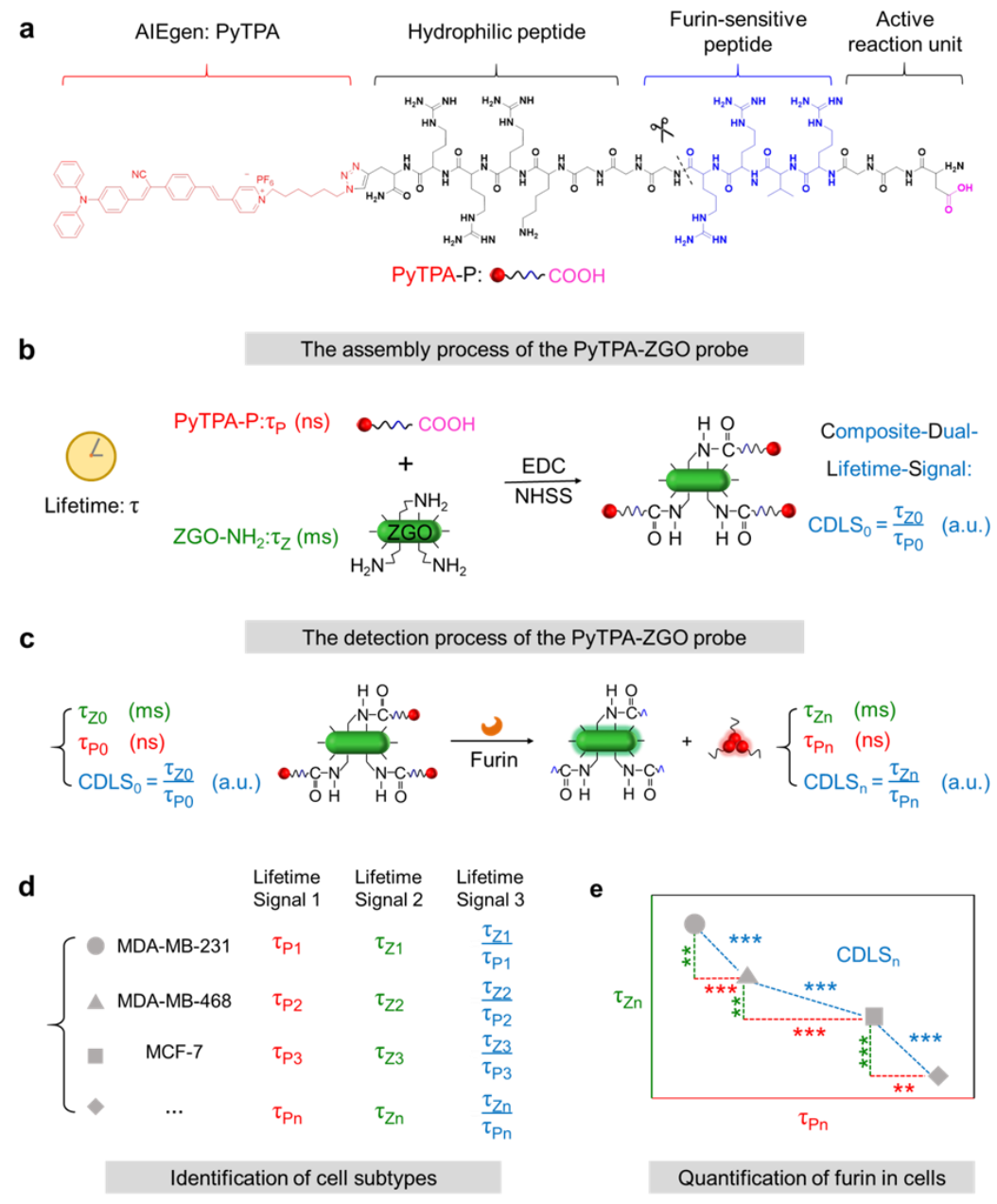Different tumor cell subtypes exist in tumor tissue, which results in the existence of heterogeneous tumors in different patients. Specifically, there are huge differences in tumor growth rate, invasive ability, drug sensitivity and prognosis. In tumor cells, the concentration of target substances can timely reflect the heterogeneity of tumors and the huge individual differences between different people. Therefore, accurate quantitative analysis of target substances in tumor cells is of great significance in the early clinical diagnosis of tumors and subsequent personalized precision medicine.
Recently, Professor Fan Xia, Professor Xiaoding Lou, and Professor Guogang Li of China University of Geosciences (Wuhan) have made a breakthrough in the development and application of lifetime probes based on aggregation-induced emission luminogen (AIEgen). They constructed a PyTPA-ZGO lifetime probe with three lifetime signals. The probe consists of a short-lifetime (nanosecond) furin-responsive AIEgen PyTPA-P and long-lifetime (millisecond) inorganic nanoparticles Zn2GeO4:Mn2+-NH2 (ZGO-NH2). The lifetime signal 1 comes from PyTPA-P (τPn), the lifetime signal 2 originates from ZGO-NH2 (τZn) and the lifetime signal 3 is the composite-dual-lifetime-signal (CDLSn, ![]() ).
).
With the change of the concentration of the target furin, the donor/acceptor system formed by ZGO-NH2 and PyTPA-P is impaired. The spatial distance of the donor/acceptor is modified and directly affects the rate of nonradiative transition, and the three lifetime signals are also corrected accordingly. These lifetime signals are used as the reporter which quantified the furin concentration in the micro-environment precisely. Moreover, we find that the CDLSn exhibits wide range between the maximum and minimum signal values and small standard deviation, and contributes to higher significant differences than the two other lifetime signals (τPn and τZn). Therefore, according to the specific concentration of furin in each subtype, CDLSn is further applied in accurately identifying cell subtypes.

Figure 1. Schemes of assembly and detection of PyTPA-ZGO probe.
This work paves the way to the design and development of AIEgen-based lifetime criterion direction strategy for precisely quantitative analysis in the future. And it provides a new strategy for the accurate identification of cell subtypes, which is of great significance for the early clinical diagnosis of tumor cells and subsequent personalized treatment. The article titled "AIEgen-Based Lifetime-Probes for Precise Furin Quantification and Identification of Cell Subtypes" was recently published in Advanced Materials.
The research was funded by the National Natural Science Foundation of China, the National Key R&D Program of China, Hubei Provincial Natural Science Foundation of China and Zhejiang Provincial Natural Science Foundation of China. Professor Fan Xia, Professor Xiaoding Lou and Professor Guogang Li from the School of Materials and Chemistry, China University of Geosciences (Wuhan) are the corresponding authors of this work, and the first author is doctoral student Hui Jia.
Article link: https://onlinelibrary.wiley.com/doi/full/10.1002/adma.202104615